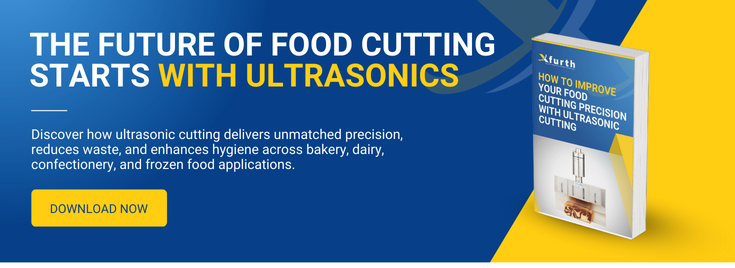
When manufacturers think of ultrasonic welding, most envision the basic joining of two thermoplastic parts. However, this perception dramatically undervalues the technology's true potential.
Modern ultrasonic equipment offers a comprehensive suite of assembly capabilities that can revolutionise production workflows, eliminate secondary operations, and create hybrid assemblies previously thought impossible. From precision metal insertion to complex forming operations, ultrasonic technology represents a complete manufacturing solution that extends far beyond simple part joining.
The Complete Manufacturing Solution
The main application of Ultrasonic Plastic Welding Machines is the welding of molded thermoplastic parts; this technique can be used successfully for riveting, forming, stacking, embedding as well as insertion of metal parts into thermoplastic material. This versatility stems from ultrasonic energy's unique ability to generate precisely controlled heat exactly where needed, enabling processes that would be difficult or impossible with traditional thermal methods.
The fundamental principle remains consistent across all applications: high-frequency mechanical vibrations create frictional heat at targeted interfaces, softening thermoplastic materials for controlled manipulation. However, the specific application of this principle opens up manufacturing possibilities that most engineers never consider.
Ultrasonic Insert Welding
Perhaps the most transformative capability of ultrasonic welding lies in its ability to embed metal components directly into thermoplastic parts. This process, known as ultrasonic insertion, creates permanent metal-plastic assemblies that eliminate traditional fastening methods whilst providing superior strength and reliability.
The Insertion Process
Ultrasonic insertion is a process of embedding a metal component in a thermoplastic part. A hole is pre-molded into the thermoplastic part that is slightly smaller than the O.D. of the insert. The ultrasonic energy applied to the insert generates frictional heat which melts the plastic, allowing the insert to be driven into place. The process is completed in less than one second and the insert is surrounded by the melted plastic.
Common applications include threaded inserts for screw retention, electrical contacts for connectivity, and mounting points for hardware attachment. The precision and speed of ultrasonic insertion make it particularly valuable for high-volume production where traditional fastening methods would be time-consuming and expensive.
Strategic Advantages
The elimination of secondary assembly operations represents a significant cost advantage. Components that previously required post-moulding drilling, tapping, or mechanical fastening can now be completed in a single ultrasonic operation. This consolidation reduces handling, eliminates additional tooling costs, and improves overall assembly reliability.
Ultrasonic Staking
Ultrasonic staking employs the melting and forming of plastic studs to retain or lock dissimilar materials in place. This capability proves invaluable when welding is impossible due to material incompatibility, or when simple mechanical retention suffices for the application requirements.
Process Fundamentals
In ultrasonic staking, also referred to as ultrasonic "heading or riveting", the controlled flow of the molten plastic is used to capture or retain another component, usually of a different material. The most commonly used application involves the attachment of metal to plastic. A hole in the metal part receives a pre-molded plastic boss. Vibrating at high frequency, the horn tip contacts the boss and through friction creates localized heat.
The process allows tight assemblies, design simplification, and elimination of additional fasteners whilst providing excellent process control and repeatability. Multiple stakes can be formed simultaneously using properly designed tooling, dramatically reducing cycle times in complex assemblies.
Design Flexibility
Various staking configurations accommodate different assembly requirements. Flared stakes provide maximum retention for most applications, whilst spherical stakes work better with smaller bosses and rigid materials. Flush stakes enable applications where protruding heads cannot be tolerated, creating clean, finished surfaces.
Spot Welding
Ultrasonic spot welding is a method of joining two like thermoplastic components at specific points with no pre-formed hole or energy director. This capability extends ultrasonic welding to applications where traditional weld joint design is impractical or impossible.
The process produces strong bonds and can be used on large parts, sheets of thermoplastic, and components with complex shapes or hard-to-reach surfaces. Applications include automotive interior panels, appliance housings, and large medical device enclosures where continuous weld lines are neither necessary nor desirable.
Degating
Ultrasonic degating is a process used in separating injection molded parts from their runner systems. It involves applying ultrasonic energy to the runner in an out-of-phase manner, causing the parts to melt off at the gate. This process provides several advantages over mechanical cutting methods.
The technique is best used with rigid thermoplastics such as ABS, styrene, or acrylics and offers quick operation, low stress on parts, and a clean break at the part surface. The elimination of cutting marks and stress concentrations improves part appearance and reduces potential failure points.
Forming and Cutting Applications
Beyond assembly operations, ultrasonic energy enables precise forming and cutting of thermoplastic materials. These capabilities allow manufacturers to combine multiple operations in single setups, reducing handling and improving efficiency.
Ultrasonic forming can create flanges, beads, and other features that capture or retain components. The precision control available with modern systems enables repeatable forming operations that maintain tight tolerances across production runs.
Cutting applications range from simple trimming to complex contour cutting of thermoplastic sheets and components. The process creates clean, sealed edges that often eliminate secondary finishing operations.
Advanced Multi-Station Operations
Sophisticated ultrasonic systems can perform multiple operations simultaneously or in sequence. Multi-head systems enable complex assemblies to be completed in single cycles, dramatically reducing production time and handling requirements.
These systems can combine welding, staking, insertion, and forming operations in predetermined sequences, creating complete assemblies from individual components. The ability to programme different parameters for each operation ensures optimal results across diverse assembly requirements.
Integration with Automated Manufacturing
The speed and precision of ultrasonic assembly operations make them ideal candidates for automated manufacturing systems. Cycle times typically ranging from 0.1 to 5 seconds, with most operations completed between 0.5 and 2 seconds, enable high-throughput production whilst maintaining consistent quality.
Robotic integration allows ultrasonic systems to process complex assemblies with minimal human intervention. Vision systems can guide precise positioning for critical operations, whilst quality monitoring systems ensure consistent results across production runs.
Material Considerations and Limitations
Whilst ultrasonic assembly offers tremendous flexibility, success depends on proper material selection and part design. The softer the plastic, the easier it is to stake, but each application requires careful consideration of material properties and processing parameters.
Dissimilar plastics remain challenging unless they have equal melt temperatures within 30°F and demonstrate chemical compatibility. Mould release agents and certain fillers can interfere with the process, requiring careful material specification and part preparation.
Strategic Implementation Benefits
The consolidation of multiple manufacturing operations into single ultrasonic processes offers compelling economic advantages. Elimination of consumables like screws, adhesives, and fasteners reduces material costs whilst simplifying inventory management.
Design flexibility increases as engineers can create assemblies that would be impossible with traditional fastening methods. The ability to join dissimilar materials expands design possibilities whilst maintaining assembly strength and reliability.
Conclusion
The diverse capabilities of ultrasonic plastic assembly represent a paradigm shift from traditional manufacturing approaches. Rather than viewing ultrasonic welding as simply a joining method, manufacturers should recognise it as a comprehensive assembly technology capable of replacing multiple conventional processes.
Success with advanced ultrasonic applications requires partnership with experienced suppliers who understand the nuances of process parameter optimisation and tooling design. The investment in proper implementation pays dividends through reduced manufacturing complexity, improved quality, and enhanced design flexibility.
As manufacturing continues evolving towards greater efficiency and sustainability, ultrasonic assembly technologies provide the tools necessary to meet tomorrow's production challenges whilst delivering the quality and reliability that today's markets demand.
Unlock the full potential of ultrasonic assembly with Xfurth's comprehensive capabilities. Our advanced ultrasonic systems go far beyond basic welding to offer complete assembly solutions including insertion, staking, forming, and cutting operations. From simple two-part assemblies to complex multi-material products, Xfurth's expertise enables manufacturers to consolidate operations, reduce costs, and achieve superior quality.
Transform your manufacturing processes with Xfurth's advanced ultrasonic assembly solutions. Contact our technical experts today to explore how our diverse capabilities can optimise your production workflows and unlock new design possibilities for your products.






